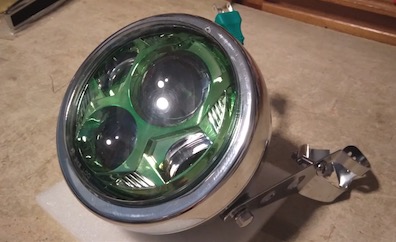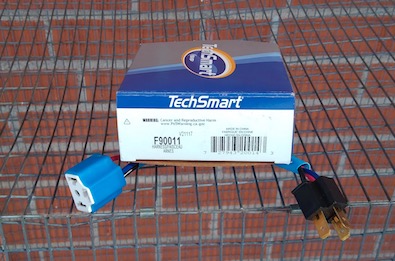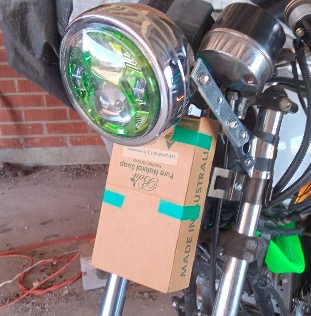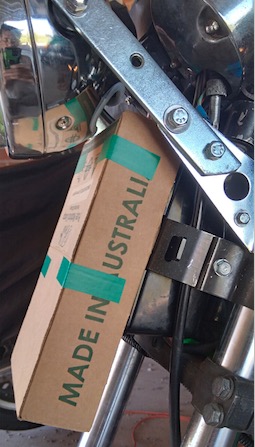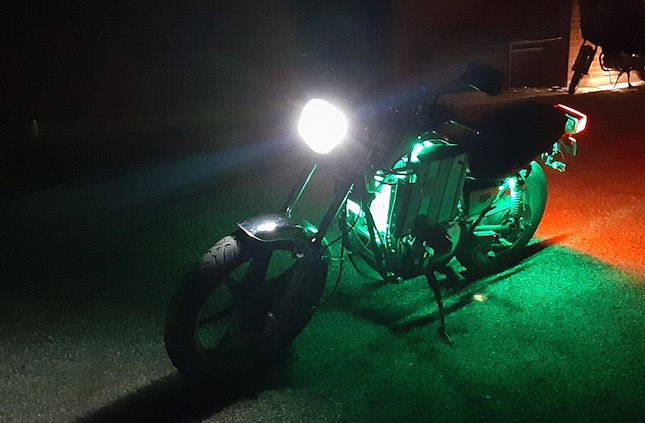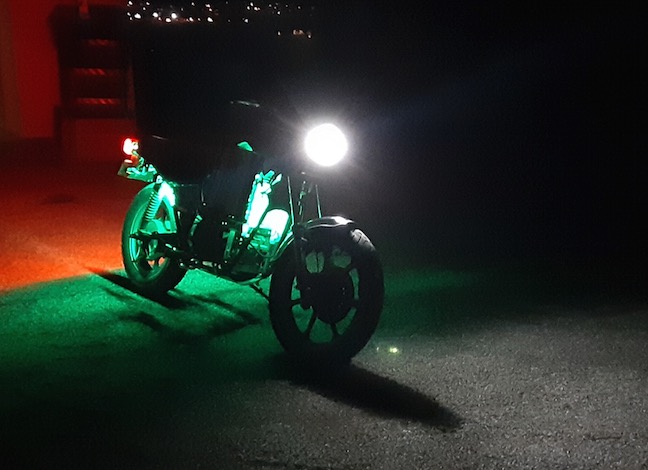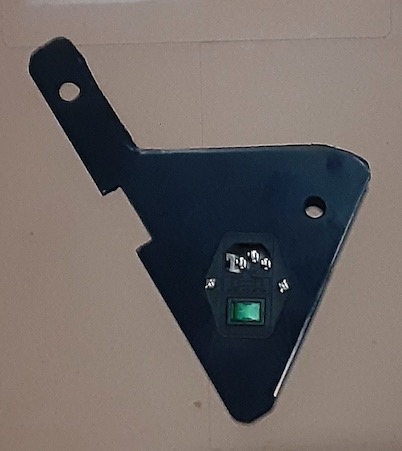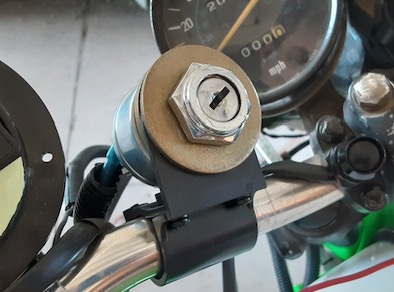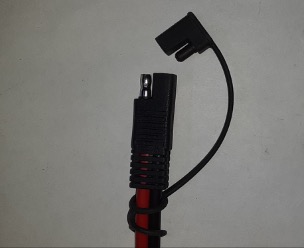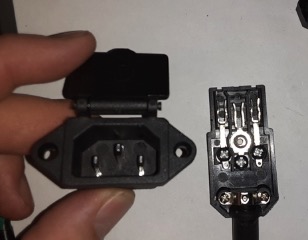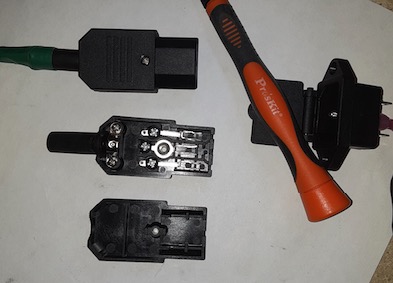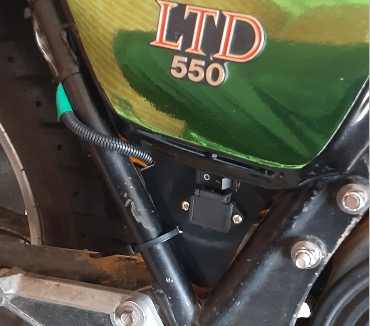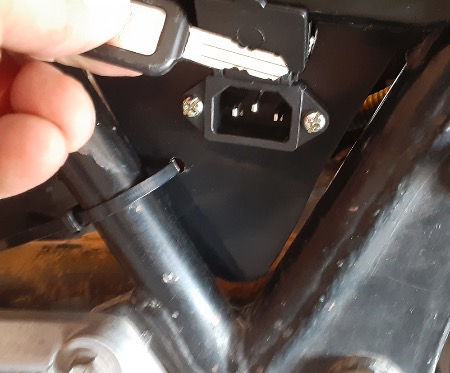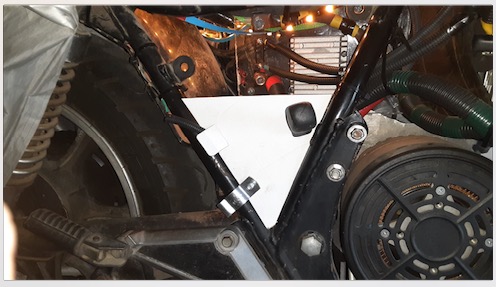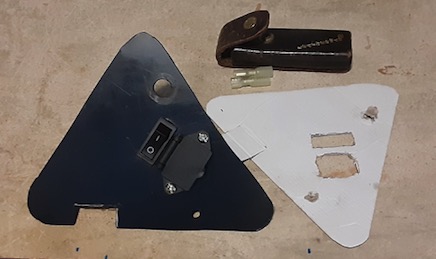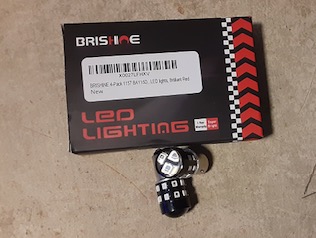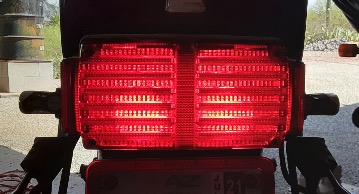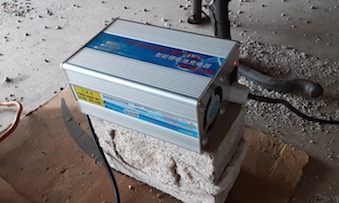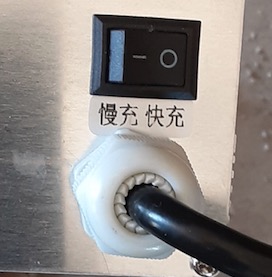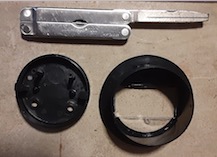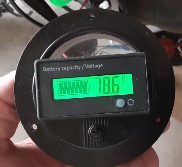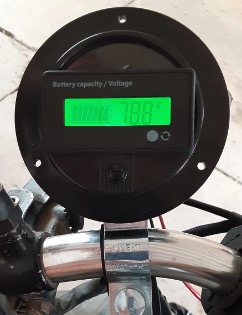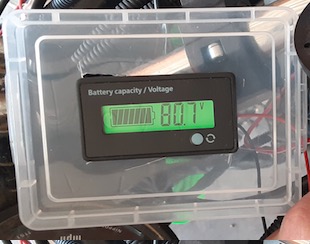Had an ongoing issue with the H4 bulb in the after market bucket (the original headlight for this bike is a sealed beam unit) where the bulb was always on high beam. Solution? trouble shoot or replace. I opted to replace with one of those cool looking, hopefully not blinding, after market LED headlights.
While losing space for the wiring harness within the bucket (it was a tight fit anyway) it was easy to install a wiring box from a Honda GL500 (thank you ebay) and put a temporary cover on it. well, it is supposed to be a temporary cover … though i did need a headlight extension cable & just bought one instead of making one.
Also lost the place my front blinky things were mounted so i’m awaiting a set of fork blinker mounts to arrive (also thank you Amazon) & will install those next weekend.

